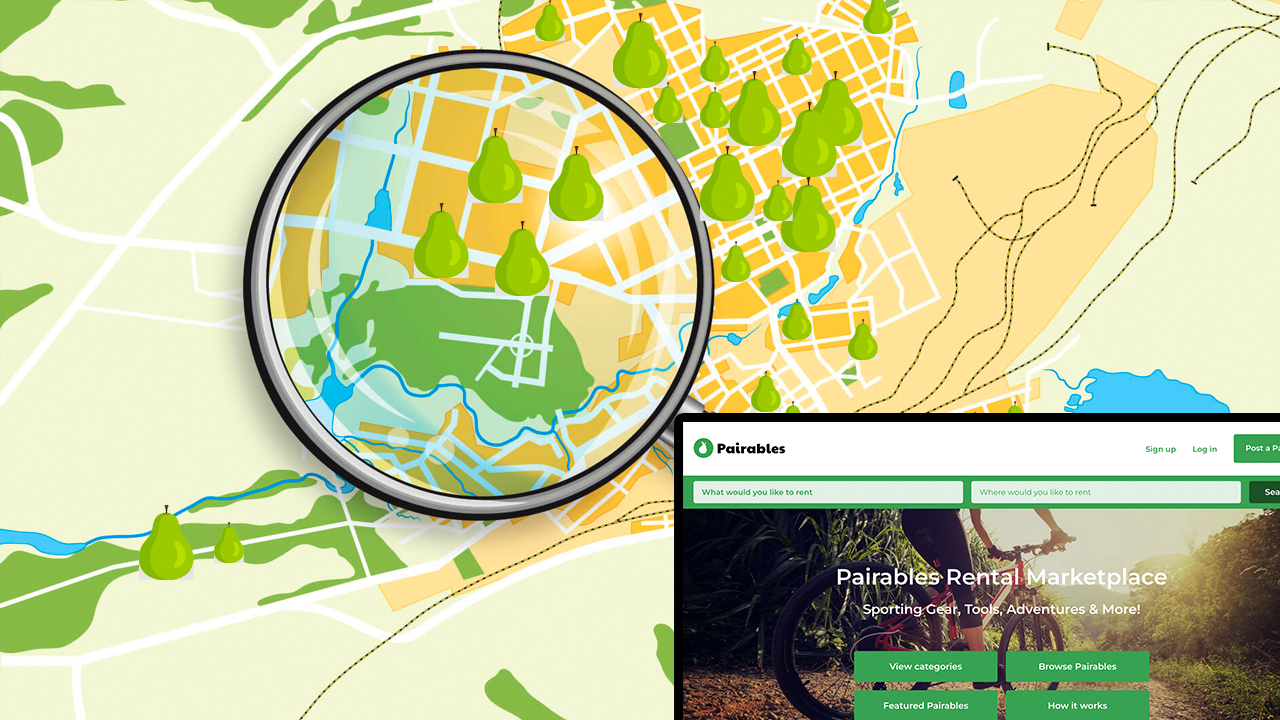Bicycles, commonly known as bikes, have been a popular mode of transportation and a source of enjoyment for generations. Over the years, bicycles have evolved significantly, catering to different preferences and riding styles. This article aims to explore various types of bikes, delve into the concept of pariables peer-to-peer rentals, and discuss the option of renting bikes from your neighbors, and what is the Best Bicycle for You.
Table of Contents
- The Evolution of Bicycles
- Different Types of Bicycles
- Pariables Peer-to-Peer Rentals
- Renting from Your Neighbors
- Benefits of Cycling
- How to Choose the Right Bike
- Safety Tips for Cyclists
- Cycling Etiquette and Best Practices
- Conclusion
- FAQs
The Evolution of Bicycles
The history of bicycles dates back to the early 19th century, and since then, they have undergone numerous
transformations. From the first pedal-powered “boneshaker” to the modern electric bikes, the evolution of bicycles has revolutionized personal transportation. When finding the Best Bicycle for You we will first have to look at all the different types of bikes available.
Quick Comparision Chart of Bicycles
Explore the World of Bikes: This comparison chart highlights various types of bicycles, their best uses, and distinctive features. Discover the perfect bike for your preferred riding style and needs
| Bike Type | Description | Best Use | Features |
|---|---|---|---|
| Road Bikes | Speed and efficiency on pavement | Long-distance rides, racing | Lightweight, drop handlebars, skinny tires |
| Mountain Bikes | Off-road adventures and rough terrains | Trail riding, downhill, enduro | Sturdy frames, wide knobby tires, powerful brakes |
| Hybrid Bikes | Versatile for urban commuting and light off-road | Commuting, leisurely rides | Upright position, wider tires, practical accessories |
| Cruiser Bikes | Relaxed and comfortable rides | Leisure rides, beach cruising | Classic design, wide cushioned seats, coaster brakes |
| Folding Bikes | Compact and convenient storage | Commuting, public transport | Easily foldable, portable |
| Electric Bikes | Assisted pedaling for longer rides | Commuting, recreational | Electric motor, various styles |
| BMX Bikes | Extreme sports and stunts | BMX racing, tricks | Small frame, single-speed drivetrain |
| Commuter Bikes | Practical and efficient for daily commuting | Urban commuting | Built-in lights, fenders, racks, chain guards |
| Recumbent Bikes | Comfortable, reclined riding position | Long rides, back support | Laid-back seating, ergonomic support |
| Touring Bikes | Long-distance adventures | Touring, bikepacking | Strong frames, wide tires, multiple mounting points |
Different Types of Bicycles
Road Bikes
Road bikes are designed for speed and efficiency on paved surfaces. They have lightweight frames, skinny tires, and drop handlebars that allow cyclists to maintain an aerodynamic position. Road bikes are ideal for long-distance rides, racing, and fitness enthusiasts who value speed and agility on smooth roads.
Mountain Bikes
Mountain bikes are designed for off-road adventures and rough terrains. They feature sturdy frames, wide knobby tires, and powerful brakes to handle uneven surfaces, dirt trails, and rocky paths. Mountain bikes come in various categories, including cross-country, trail, enduro, and downhill, catering to different levels of intensity and terrain challenges.
Hybrid Bikes
Hybrid bikes blend the features of road bikes and mountain bikes, making them versatile for both urban commuting and light off-road trails. They have a comfortable upright riding position, and wider tires for stability, and often come equipped with accessories like fenders and racks for practicality.
Cruiser Bikes
Cruiser bikes are all about relaxed and comfortable rides. They typically have a classic design with wide, cushioned seats, high handlebars, and simple coaster brakes. Perfect for leisurely rides along the beach or around town, cruiser bikes prioritize comfort and style.
Folding Bikes
Folding bikes are compact and convenient, designed to be easily folded and stored in small spaces. They are popular among commuters who need to combine cycling with public transportation or have limited storage at home or work.
Electric Bikes (E-bikes)
Electric bikes, also known as E-bikes, are equipped with an electric motor that assists pedaling. They provide an extra boost of power, making it easier to climb hills and travel longer distances with less effort. E-bikes come in various styles, from city commuters to mountain E-bikes.
BMX Bikes
BMX bikes are designed for extreme sports and stunts. They have a small frame, single-speed drivetrain, and durable components to withstand jumps, tricks, and off-road obstacles. BMX bikes are popular among thrill-seeking riders and professional athletes.
Commuter Bikes
Commuter bikes are practical and efficient for daily urban commuting. They often come with features like built-in lights, fenders, racks, and chain guards. Commuter bikes prioritize comfort and functionality, making them suitable for everyday transportation.
Recumbent Bikes
Recumbent bikes have a unique design with a laid-back, reclined riding position. They offer ergonomic support and reduce pressure on the back and joints, making them ideal for people with physical limitations or seeking a different riding experience.
Touring Bikes
Touring bikes are designed for long-distance adventures and exploration. They have strong frames, wide tires for stability, and multiple mounting points for attaching panniers and gear. Touring bikes are built to carry heavy loads and handle various road conditions.
Pariables Peer-to-Peer Rentals
Pariables peer-to-peer rentals are an innovative approach to bike sharing, enabling individuals to rent bikes directly from other bike owners within their community. This cost-effective and eco-friendly method promotes community engagement and bike utilization. With the convenience of technology, people can easily find available bikes in their neighborhood, helping to reduce the carbon footprint and fostering a sense of connection among local cyclists. Would you rather rent your bike when travelling check out our full article here.
Renting from Your Neighbors
Renting bikes from your neighbors offers convenience and helps build a sense of camaraderie within the neighborhood. It encourages a sharing economy while providing access to bikes without the need for long-term commitments. By renting from your neighbors, you contribute to a sustainable and community-oriented lifestyle, and it can also be an excellent way to try out different types of bikes before making a purchase.
Benefits of Cycling
Physical Health Benefits
Cycling is an excellent cardiovascular exercise that helps improve stamina, muscle strength, and joint flexibility. Regular cycling can promote weight loss, reduce the risk of chronic illnesses, and enhance overall fitness levels. Whether it’s a leisurely ride or an intense workout, cycling is a fun and effective way to stay physically active.
Environmental Advantages
Cycling is a sustainable and eco-friendly mode of transportation. Unlike cars, bikes do not produce harmful emissions or contribute to air pollution. By choosing to cycle instead of driving, individuals can reduce their carbon footprint and contribute to a cleaner and healthier environment.
Cost-Effectiveness
Compared to owning and maintaining a motor vehicle, cycling is a cost-effective mode of transportation. The initial investment in a bike is relatively low, and the ongoing costs for maintenance and occasional repairs are minimal. Cyclists can save money on fuel, parking fees, and public transportation expenses, making it an economical choice for daily commuting and short-distance trips.
Mental Well-being
Cycling is not just beneficial for the body but also for the mind. Engaging in regular physical activity like cycling can help reduce stress, anxiety, and depression. The act of cycling outdoors in nature can also promote a sense of relaxation and improve mental clarity, making it an excellent activity for mental well-being.
Community and Social Aspects
Cycling can foster a strong sense of community and social connection. Joining group rides, bike clubs, or participating in cycling events can introduce cyclists to like-minded individuals and create a supportive network. Additionally, cycling can be a shared experience with friends and family, enhancing bonds and creating cherished memories.
How to Choose the Best Bicycle for You
Consider Your Riding Style
Identifying your primary cycling activities is the first step in choosing the Best Bicycle for You. Determine whether you’ll mainly use it for commuting, leisurely rides, off-road adventures, long-distance touring, or specific sports like BMX or mountain biking. Each bike type is designed to excel in specific riding scenarios, so selecting one that aligns with your preferences is crucial.
Frame Material and Size
The frame material impacts the bike’s weight, durability, and comfort. This can be very important when selecting the Best Bicycle for You. Common frame materials include aluminum, steel, carbon fiber, and titanium. Each material has its advantages and caters to different riding styles. Additionally, choosing the right frame size is essential for ensuring a comfortable and efficient riding experience.
Gearing System
The bike’s gearing system determines the range of gears available for various terrains and riding conditions. Bikes with multiple gears are versatile and ideal for hilly areas or challenging terrains, while single-speed bikes are simpler and require less maintenance.
Suspension
For off-road or rough terrain cycling, a bike with suspension can enhance comfort and control. Mountain bikes often feature front suspension forks or full suspension systems, absorbing impacts from bumps and obstacles. On the other hand, road bikes and city bikes may have no suspension or only front suspension for a more efficient ride on smooth roads.
Brakes
The type of brakes on a bike is essential for safety and control. Common brake types include rim brakes, disc brakes, and coaster brakes. Rim brakes are found on many road and hybrid bikes, while disc brakes are popular on mountain bikes and some high-end road bikes. Coaster brakes are typically found on cruiser bikes, and they engage by pedaling backward.
Wheel Size
The size of the bike’s wheels can affect its performance and handling. Smaller wheels are often found on folding bikes and some commuter bikes, providing more compact storage and agile maneuverability. Larger wheels, like those on mountain bikes, offer better stability and traction on rough terrains.
Additional Accessories
Consider any additional accessories you may need based on your intended use. Common accessories include fenders to protect against mud and water splashes, racks for carrying bags or cargo, lights for visibility in low-light conditions, and a comfortable saddle for long rides.
Test Rides and Consultations
Before making a final decision, it’s essential to test ride different bikes to get a feel for their handling and comfort. Visit local bike shops and consult with experienced cyclists or sales staff who can provide valuable insights and recommendations based on your preferences and needs.
Safety Tips for Cyclists
Wear a Helmet
Always wear a properly fitted helmet to protect your head in case of accidents or falls. Helmets can significantly reduce the risk of head injuries and should be worn regardless of cycling experience or age.
Follow Traffic Rules
Cyclists must obey the same traffic rules as motor vehicles. Signal turns, stop at traffic lights and stop signs, and yield the right-of-way as required. Being predictable and visible to other road users enhances safety for everyone.
Use Hand Signals
Communicate your intentions to other road users by using hand signals. Indicate turns and stops to inform drivers and pedestrians of your next move, promoting a safe and coordinated flow of traffic.
Stay Visible
Enhance your visibility, especially when cycling in low-light conditions or during adverse weather. Wear bright or reflective clothing and equip your bike with lights, both front and rear, to ensure that others can see you from a distance.
Maintain Your Bike Regularly
Regular bike maintenance is essential for safety and performance. Check your bike’s brakes, tires, chain, and gears regularly. Keeping your bike in good working condition reduces the risk of malfunctions and accidents while ensuring a smooth and enjoyable ride.
Avoid Distractions
Stay focused and attentive while cycling, avoiding distractions such as using mobile phones or listening to music with headphones. Being fully aware of your surroundings allows you to react promptly to potential hazards on the road.
Be Cautious in Bad Weather
Exercise extra caution when cycling in adverse weather conditions. Wet roads can be slippery, reducing tire traction, while strong winds can affect balance. Adjust your speed and braking to adapt to changing weather conditions and ensure a safe journey.
Cycling Etiquette and Best Practices
Share the Path
When cycling on shared paths or trails, be mindful of pedestrians and yield the right-of-way to them. Slow down when passing and always provide a friendly and courteous attitude to promote positive interactions.
Be Courteous to Pedestrians
When cycling on sidewalks or shared walkways, give pedestrians priority. Slow down or dismount when passing closely, and use a bell or call out to alert them of your presence.
Communicate with Other Cyclists
When cycling in groups or encountering fellow cyclists, use verbal communication or hand signals to indicate your intentions. This helps prevent collisions and ensures a smooth flow of traffic within the cycling community.
Respect Private Property
Avoid cycling on private property or restricted areas, respecting the rights of property owners. Stick to designated bike lanes, paths, or public roads to ensure legal and considerate cycling practices.
Mind Your Speed
Adapt your cycling speed to the environment and the presence of others. Slow down when passing pedestrians, navigating tight corners, or riding in congested areas. Be aware of speed limits in certain zones and adjust your pace accordingly.
Properly Dispose of Trash
Be mindful of your impact on the environment by disposing of trash responsibly. Carry a small bag for litter and dispose of it in appropriate bins when available.
Be an Ambassador for Cycling
Set a positive example for fellow cyclists and the community by adhering to traffic rules, practicing good cycling etiquette, and promoting a friendly and responsible cycling culture. Your behavior can inspire others to adopt cycling as a sustainable and enjoyable mode of transportation.
Conclusion: Best Bicycle for You
Cycling is a versatile and eco-friendly mode of transportation that offers numerous benefits, from improved physical health to reduced environmental impact. With various types of bikes available to cater to different needs and preferences, cycling enthusiasts have a wide range of options to choose from. Additionally, embracing innovative approaches like pariables peer-to-peer rentals and renting bikes from neighbors fosters community engagement and sustainable bike utilization. Remember to prioritize safety, follow road rules, and respect fellow road users while enjoying your cycling adventures. So, grab your helmet, hop on your bike, and pedal your way to a healthier, happier, and greener lifestyle.
FAQs: Best Bicycle for You
Is cycling suitable for all ages?
Yes, cycling is suitable for people of all ages, from children to seniors. It is a low-impact exercise that can be tailored to individual fitness levels.
What are the benefits of electric bikes?
Electric bikes provide pedal-assisted power, making cycling more accessible to individuals with varying levels of fitness or mobility issues. They allow for longer rides with less effort.
Can I ride a road bike off-road?
Road bikes are designed for paved surfaces and may not perform well on rough terrains. It’s best to use appropriate bikes like mountain bikes for off-road adventures.
Are recumbent bikes comfortable for long rides?
Recumbent bikes offer a comfortable seating position and can be suitable for extended rides, especially for individuals with back or joint issues. They provide excellent support and reduce strain on the back, making them a viable option for riders seeking a more relaxed and laid-back cycling experience.
How do I find bike rental options in my area?
You can explore various bike rental apps or websites that connect you to bike owners offering rentals in your local community. Additionally, pariables peer-to-peer rentals and community-based initiatives may have platforms that allow neighbors to share and rent bikes with ease. It’s a convenient and eco-friendly way to find and access bikes without the need for ownership.




